February 7, 2020 — Walking along the edge of a seasonally dry lakebed on the eastern outskirts of Mexico City, there is near perfect silence except for the occasional airplane that flies overhead.
These planes flying out of a nearby airport are a reminder of the estimated US$13 billion international airport that had been planned and partially constructed on top of the seasonal wetlands native to this place. Then, in 2018, Mexico’s new president, Andrés Manuel López Obrador, canceled the project and moved forward with plans to construct what would be one of the world’s largest urban parks instead. Experts from around the world hope the project, if successful, will serve as an example to other cities of what is possible in the fight against climate change.
Turning Back the Clock
The size of the proposed park is nearly unfathomable from ground level, covering 12,300 hectares (30,394 acres) and stretching 16 kilometers (10 miles) from end to end. That’s about the size of 36 New York Central Parks or more than twice the size of Manhattan.
The government and the architect behind the park, known as Parque Ecológico Lago de Texcoco, see great potential in the park — particularly in the face of mounting water shortages, floods and climate change. They view this mega project as one that could turn back the clock on disruptions to the region’s water systems dating back to Hernán Cortés and the Spanish siege of Tenochtitlan in 1521.
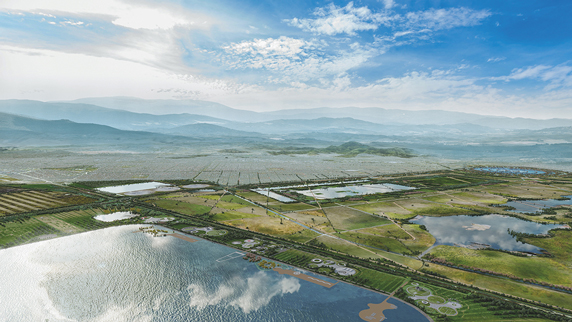
One of the goals of the project is to merge the concepts of public spaces and green infrastructure, providing hiking trails, sports courts and lakes for recreation, while bringing back the lakes to rebalance the Valley of Mexico’s water system. Image courtesy of Iñaki Echeverria
The region’s lakes were the primary source of freshwater during Aztec times, but the Spanish drained the valley’s lakes after they took over the city of Tenochtitlan. This forced an independent Mexico centuries later to construct hundreds of miles of pipes to bring in roughly 30% of the city’s water and to pump the rest from an underground aquifer. The city is now pumping water out of that aquifer twice as fast as water is returning via rainfall.
On the other side of the equation, the city, which has been largely paved over, floods for months during the rainy season.
“The problem is we cannot turn 500 years of history and go 180 degrees overnight,” says Mexico City architect Iñaki Echeverria, executive director of the park project. “Very few times you are offered the possibility that can have an impact that can really change things. If we manage to do this, it changes the direction of the history of the city and the valley.”
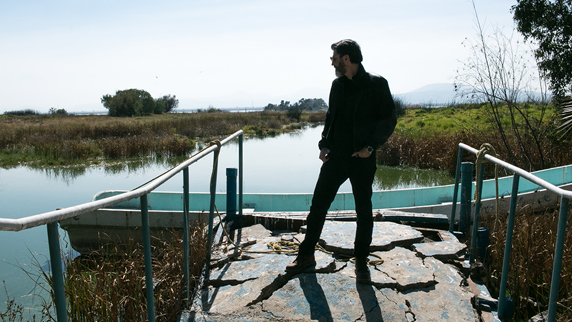
Mexico City architect Iñaki Echeverria, executive director of the park project, speaks about his plans for the project standing next to Lake Nabor Carrillo. Photo by Paul Biasco
The project is designed to be constructed in the basin of the former Lake Texcoco, which dried as Mexico City expanded into a megacity of more than 20 million people over the past two millennia. The area has not been inhabited and has been off-limits to the public due to annual flooding and infrastructure issues.
Echeverria is seeking to restore the vast majority of the area to its former state, including rejuvenating numerous lakes that were drained, as well as wetland areas. One of the goals of the project is to merge the concepts of public spaces and green infrastructure, providing hiking trails, sports courts and lakes for recreation, while bringing back the lakes to rebalance the Valley of Mexico’s water system. That includes routing stormwater runoff into the wetlands and replenishing aquifers.
“This is really the only space that’s left [in the city] and it’s federal land and it’s untapped,” Echeverria says. “It was going to disappear. Right now there’s a possibility to keep it, so we are really working hard to make this happen as soon as possible, to bring people here to understand that this is not a fantasy. This is something that can happen.”
The government hopes to open up the first section of the park project by 2021, according to Echeverria. The architect, who grew up in Mexico City, says he is feeling the pressure from all angles to complete the project or get each component on the right path before the end of the current presidential administration in 2024.
“People are expecting me to fail. A lot of people. For the right reasons, for the wrong reasons, for every reason,” Echeverria says. “There’s a lot of people betting this will not happen, so of course there’s pressure.”
Lessons for Other Cities
In addition to the water-system goals of the park, the project team is planning for a significant solar power component and is considering wind and biofuels to offset maintenance costs.
“I cannot afford the luxury of just going crazy on the beauty of this place like I used to,” Echeverria says, referring to his previous work designing projects; now, as the director of the entire project, he has to worry about more than just design, such as costs and implementation. “I have to give it the means to maintain itself,” he says. “The means to grow, the means for it not to disappear after this government is gone.”
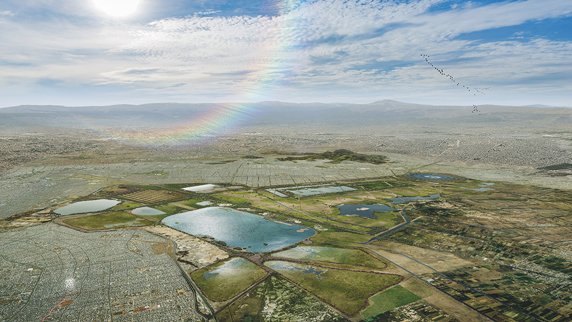
“If this is successful, a lot of people will go there and learn from it,” says Steffen Lehmann, director of the University of Nevada, Las Vegas, School of Architecture and co-director of the interdisciplinary Urban Futures Lab. Image courtesy of Iñaki Echeverria
Echeverria had proposed a design for the park 10 years ago, but that plan was quashed to make way for the airport project.
“We thought it was dead for sure and it suddenly comes back to life again. I’m not mystical or anything, but it’s almost like the lake is refusing to die completely,” Echeverria says. “It’s fighting. I think we had to get involved in that fight.”
The government’s decision to dedicate an enormous plot of land for natural area and green infrastructure so near the city center is a progressive one that experts say could affect the future of public spaces around the world.
“If this is successful, a lot of people will go there and learn from it,” says Steffen Lehmann, director of the University of Nevada, Las Vegas, School of Architecture and co-director of the interdisciplinary Urban Futures Lab. “Cities are learning from each other. Cities are learning that they should share their best practices.”
Lehmann, an internationally recognized architect and author on sustainable architecture and urban design, pointed to New York’s High Line project and the “High Line-ization” of copycat parks around the world as an example.
Other world cities that have completed major urban parks in recent years include Seoul, Moscow and Singapore.
“It’s going to have a huge impact,” Lehmann says of the upcoming Mexico City project. “We need urban forests with climate change, and we need those parks to keep cities cool because of the urban island effect. Cities heat up and store and trap solar radiation and store heat like an oven. It’s underestimated. It’s a big silent killer.”
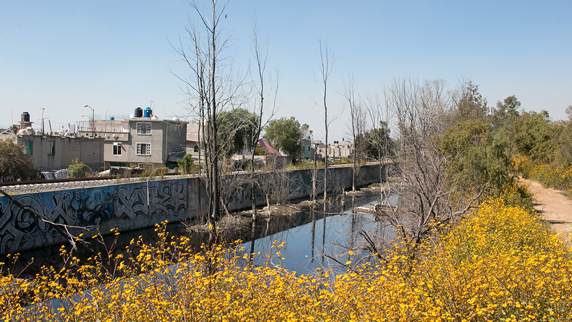
The edge of what will become parkland is adjacent to some of the poorest neighborhoods in Mexico City, according to Mexico City architect Iñaki Echeverria, executive director of the park project. Photo by Paul Biasco
The project will also capture carbon and mitigate air pollution.
Lehmann says there is an ongoing struggle against the privatization and urbanization of public space in cities around the world.
“This is the kind of work that cities are hungry for. They are looking for ways to include good local governance practices and good water management practices,” says Raul Pacheco-Vega, a water scholar at Centro de Investigación y Docencia Económicas, a Mexico City-based think tank. “Here you kill three birds with one stone. You improve urban governance by providing more green space, you improve water management, and you showcase measures of adaptation to climate change.”
Setting a Precedent
Echeverria is directing the project for the National Water Commission (Conagua), and has gathered a diverse team of ecologists, architects, planners, landscapers, biologists and politicians to bring the project to life.
The first phase, restoring Lake Nabor Carrillo and building public sporting facilities in a portion adjacent to it, is expected to break ground in early 2020. That portion will also include a 10-kilometer (6-mile) running trail around the lake.
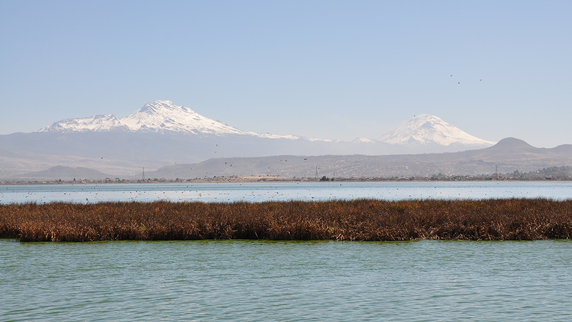
Mexico’s volcanoes Popocatépetl and Iztaccihuatl can be seen on a clear day from Lake Nabor Carrillo. The first phase of Parque Ecológico Lago de Texcoco will be restoring Lake Nabor Carrillo and building public sporting facilities in a portion adjacent to it. Photo by by Luis Gallardo
Eventually, the project will expand to the area where the airport had been partially built and involve restoring the Casa Colorada lake, which will flood the already-built runway and terminal foundations.
“There’s a lot of things that have to happen over there,” Echeverria says, referring to an ongoing legal battle over the canceled airport. “I’ve tried to keep a very cold mind about that. We have so much work to do without even touching that area. We will work on that. From a project stance, we will begin working as soon as it’s legally permitted.”
The project is located roughly 10 miles (16 kilometers) from the city’s Centro Histórico and is directly adjacent to some of the poorest neighborhoods in Mexico City, according to Echeverria.
“It would be something of a life-changing situation if this space could be created and be next to what is the highest rate of crime and highest rate of poverty in the entire metropolitan region,” he says.
The project currently is being funded completely by public money, according to Echeverria; but he says his team is looking into private funders for portions of the site, including the renewable energy production areas.
Preliminary studies required for the project were estimated at US$11.78 million, according to Conagua.
Related Posts
Ensia shares solutions-focused stories free of charge through our online magazine and partner media. That means audiences around the world have ready access to stories that can — and do — help them shape a better future. If you value our work, please show your support today.
Yes, I'll support Ensia!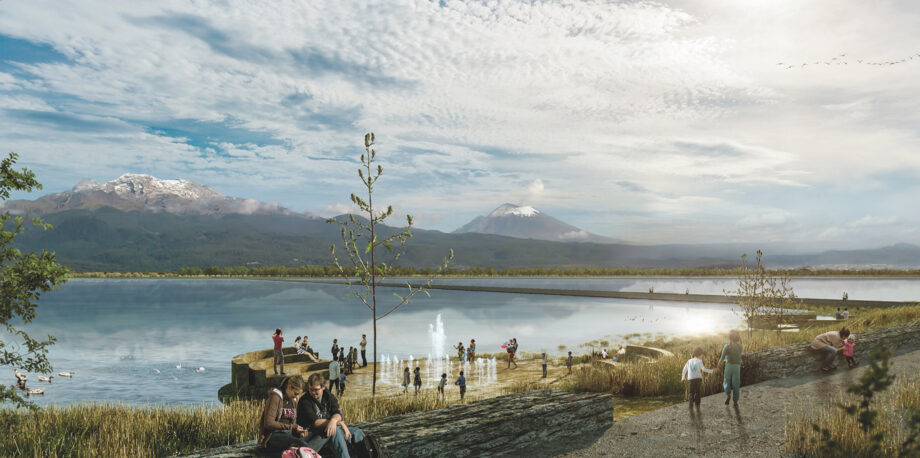


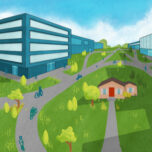
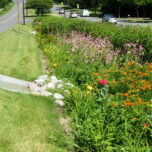
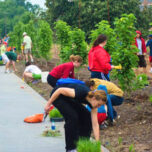
Of course architect Echevarría promotes the park project, as his firm is in charge of it.
Sometimes international reporters, with little insider knowledge of Mexican politics, are duped to believe idealized versions of the underlying political interests.
First of all, thank you very much for your work protecting and caring for the environment.
I would like to introduce you to some ideas about the current situation on the planet.
All the scientific indicators and evidence have been warning us for a long time that our way of life is not sustainable, but we don't seem to care.
We, humans, are taking this planet to the limit of its possibilities, to the point where it will extinguish all living things, including us, but it does not seem to matter to us.
It does not seem to affect that we are responsible for the extinction of all living things included on the planet.
What covid-19 is doing to the human body is what we "homo sapiens" are doing to the planet
Collapse !!!
We must change our way of life, or the planet will die.
Now the idea of the Circular Economy has become fashionable, the idea that nothing is wasted and that waste from productive processes becomes a raw material, a resource, for another process.
This is what the universe has been doing since the beginning of time.
And this is what the human being intends to do now, when we have exhausted all available resources and raw materials, and there is no other alternative.
We must rethink and reevaluate everything about all human activities and their present and future impact on the planet, not only to be sustainable and non-polluting but to recover and repair everything that the human being has damaged since the beginning of his power over the environment.
Let's not fool ourselves by saying that "it is cheaper to buy something new than to repair it".
Is this really true? Regardless of the sale price.
This is a lie, the sale price does not include all costs, not even the economic ones. There are many more values than just the economic ones.
We need high-level Engineering of production of goods and services that think and design the way of recovering easily "everything" that is used in its manufacture, and not only the most valuable materials.
We must go further beyond what has already been accomplished.
Even a simple grain of sand is important.
It is much more than the typical 5 R´s of a responsible consumer, much more.
Refuse, Reduce, Reuse, Recycle, and Rot.
You can add as many R's as you can imagine.
We must prepare a global action plan and not just a declaration of good intentions that we know that no one will comply with.
The first step would be to educate all children so that this respect is incorporated into their personality for their whole life.
As a single cell within a multicellular organism
The main idea should be to make everyone understand that we are responsible for our health, for the health of the planet and the health of everything around us.
The circular economy is a good idea, but we must create a new concept "circular health", that is: the health of the planet depends on us and we depend on the health of the planet.
A healthy planet depends on each and every one of us, and our life and health depends on it.
Each of us loves the place and the country where we were born, grew up and lived in our childhood.
But if each and every one of us does not change our way of life, there will be no Countries to love, because there will be no Planet to love, and not even us.
We must take urgent, immediate, and high priority measures and actions before it is too late, I hope we are still on time.
We must think, and reconsider everything, yes, but we must act and quickly.
This wonderful planet does not deserve a bad ending.
It is a matter of life and death, and this is not just an expression, it is something real !!
Is this planet a product to use and throw away?
And the human being, is also a product to use and throw away?
People say:
That all sounds pretty good, but who pays for it?
The worst thing that can happen is that everything ends and that no one survives to be able to pay for it.
Is this the inheritance that we want to bequeath to our children?
What are we waiting for to act?
Thank you very much
Stay healthy
Greetings from Spain
This text is free and is not copyrighted
This text was written in 2020 lockdown in Spain
Oscar Martínez